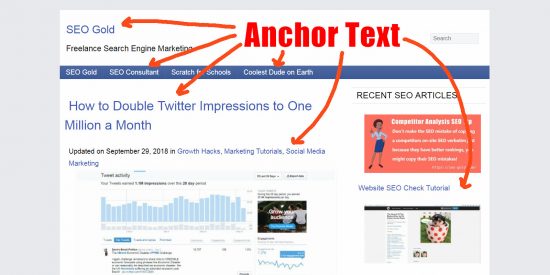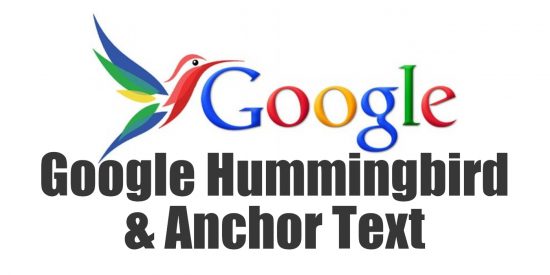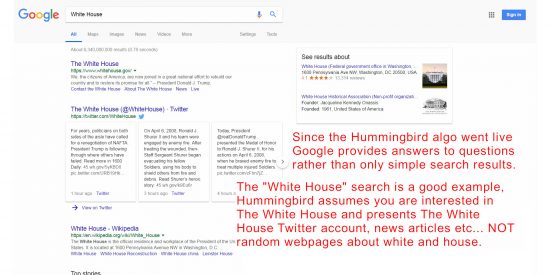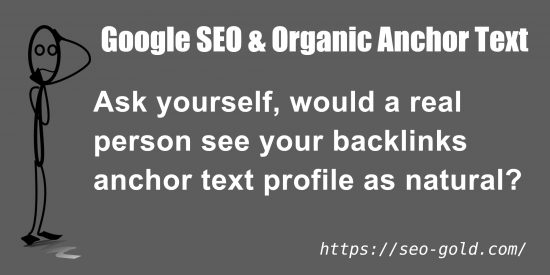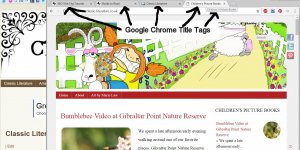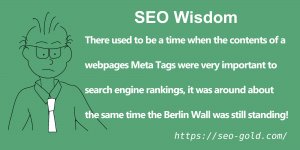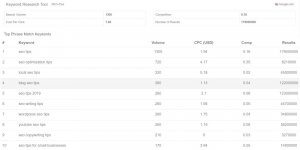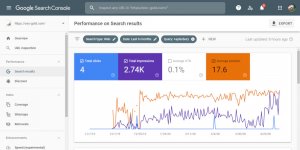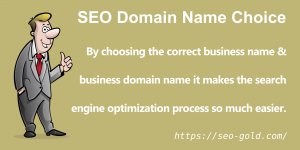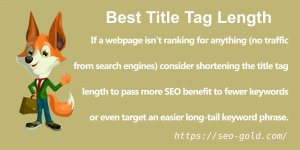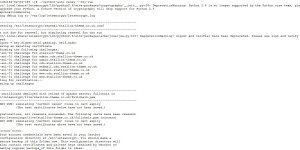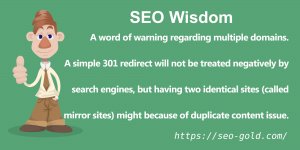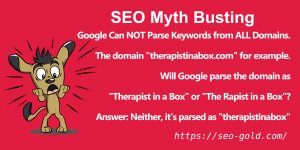The basic SEO advice ever since Google existed (late 90s) regarding the anchor text of links was add your keywords as the anchor text of text links. Really simple and easy to follow advice, but is that still true for Google 2020 and beyond?
Prior to the Google Hummingbird, Penguin, Panda etc… algorithm updates (before 2011) I advised trying to add your most important keyword phrases as anchor text. When Google was much dumber than it is today, you could literally target a competitive SERP ONLY with anchor text! Gain enough backlinks with anchor text Coolest Dude and the page linked to would rank for Coolest Dude.
It really was that simple, Google was REALLY dumb compared to now, how I miss those days when Google was the village idiot.
Adding your keywords/keyphrases as anchor text is still solid SEO advice, but especially since the Google Hummingbird algorithm update (a major Google update in 2013), Google has got MUCH better at spotting natural language patterns and having almost identical anchor text for all backlinks isn’t exactly natural language!
For example if you manually looked at a link profile for a website and found 31,000 backlinks with 30,000 all with the same anchor text, you wouldn’t need to be an overpaid Google software engineer to guess those 30,000 identical links are probably NOT 100% natural. 10+ years ago it would have taken a manual review to spot and act on that type of gaming of Google, but today the Google algorithms are so advanced with machine learning (AI) it’s mostly automated using advanced search algorithms and machine learning.
Google HummingBird Algorithm Provides Answers to Questions
The Hummingbird algorithm in particular was a shift in how Google works, from a simple search engine to an answers engine. In simple terms if you searched for “White House” way before Hummingbird was live, Google would present anything related to that phrase, obviously that includes The White House, but it might also have shown a song or a book called White House or a page about a random house that’s white.
Today Google makes an assumption (an educated guess based on machine learning) you are probably looking to discover what’s happening at The White House and will present results related to The White House: The White House website, their Twitter account, recent news results related to the White House, hotels near the White House etc…
If the searcher is actually looking for a song called White House a search for White House Song might show nothing about The White House per se and mostly list music relevant results, that one extra keyword completely changes the results.
Like most people reading this SEO tutorial you know without being told when I wrote The White House I’m referring to the White House in the USA where the US President has a day job. I didn’t have to tell you I meant the political White House, you knew because of your personal knowledge base and Google is attempting to work in a similar way via the Hummingbird algorithm and machine learning (AI).
It’s a really cool way for a search engine to work, it’s like it understands natural language like we do, but it makes SEO more difficult and more interesting.
What is Natural Language in Anchor Text Terms?
If this SEO tutorial managed to attract 100,000 natural links, all added manually, one at a time by real people on their blogs etc… The anchor text would be varied, a lot would use the article title “Google Hummingbird Algorithm and Anchor Text” or a close derivative of the title, others would use “Click Here” or “Here”, others a short description like “see how Hummingbird looks for natural anchor text”.
Google’s algorithms are looking for this natural link pattern. Let’s say 75% use the title or a very close derivative. What would the remaining 25% look like?
Some might add a link within sentences like these:
Found this great tutorial on anchor text, blah, blah…
Have you seen this anchor text tutorial, blah, blah…
Looking to be convinced anchor text is important, blah, blah…
Or they might even copy an anchor link and link directly to a section within the article like this:
Have you read What is Natural Language in Anchor Text Terms? Click this link it will jump you up this webpage a little bit to the top of this section, the URL of this link has an anchor #natural.
All this variation in anchor text looks far more natural than all the links having one keyphrase.
It’s easy to add an anchor to a webpage, the one above is within a H3 heading, simply give an HTML element an ID like so:
<h3 id="natural">What is Natural Language in Anchor Text Terms?</h3>and the ID can be used as the anchor (full URL: https://seo-gold.com/google-hummingbird-algorithm-and-anchor-text/#answers).
This is not new for Google since the Hummingbird algo (late 2013), it’s been a steady progress where Google appears to able to determine natural links through natural language usage, with the earlier Google Penguin and Panda updates (over several years) Google was getting better at determining natural anchor text usage.
With Hummingbird they seems to be even better than ever and we can only assume their future updates will get even better at determining natural anchor text usage: when building backlinks assume all the anchor text will be seen by a real human who will judge it.
Google SEO and Organic Anchor Text
Ask yourself, would a real person see your backlinks anchor text profile as natural?
Imagine a human being or a super advanced AI could instantaneously look at every link to a webpage and finds 99% of them uses the exact same anchor text or just a few very close derivatives, it’s going to suggest either the webmaster of the site added the links or they’ve been added automatically by software etc…
WordPress for example automatically adds links to all the content we add from various widgets and the categories archives: on most sites the automated links anchor text will usually be identical (no variation). That’s OK, Google understands how content management systems like WordPress works and won’t downgrade (or not rank) a site because of automated links from category archives and navigation widgets.
I used to use a WordPress plugin for internal linking from within the body text of articles like this one. You could set keywords and keyword phrases to turn into text links, if I wanted a webpage to rank for SEO Tutorial I’d add ‘SEO Tutorial’ as a keyphrase to look for and turn into text link to a target URL. The plugin would automatically look through every WordPress post for the phrase SEO Tutorial and turn some of them into link with anchor text SEO Tutorial (like this link). Great in principal, problem is it added dozens or even hundreds of internal links with identical anchor text and that’s very easy for an advanced Google search algorithm to spot.
Google MIGHT downgrade that type of anchor text pattern, or to be more precise not rank as high relative to if it were more natural looking.
Many years ago there wasn’t a problem adding thousands of links with almost identical anchor text, Google pretty much counted it all and a webpage would rank high for the keywords within the anchor text.
Before the Google algorithm changes if I wanted a page ranked for a SERP like “SEO Tutorial” I’d add as many links like the one above and didn’t worry too much about making them appear natural: this worked for over 10 years.
As Google got better at determining ‘natural’ links (way before Hummingbird) I went with many more derivatives for anchor text that appears more natural, so not just the main SERP targeted.
Today, I no longer add automated internal links beyond navigation links, all links from this article for example were manually added one by one. When I link from within articles (contextual links) I might use longer anchor text that covers one or more of the important keywords. Just look through the links from this article, several use long anchor text that’s far from perfect keyword wise, but I think you’ll agree they use natural language like the link with anchor text: “Adding your keywords/keyphrases as anchor text is still solid SEO advice” which links to the SEO Tutorial about anchor text.
If you’ve spent years working on a particular hard SERP, you’ve probably generated a lot of backlinks using that exact keyword(s) as anchor text, this might not be helping your site as much as it used to. In comparison sites that haven’t worked hard on backlinks, but have naturally generated backlinks (great content makes awesome link bait) the anchor text of the links are far more varied, many won’t even include a relevant keyword and will give them a better chance for higher Google SERPs today.
I would suggest as you maintain content you have direct control over, try to vary the anchor text of current links IF the pages linked to aren’t ranking for the anchor text you’ve used for links.

